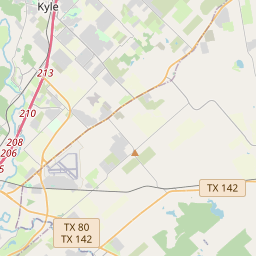The Coopwood House







A one-story residence stood on this lot when businessman James G. Blanks (1862-1927) purchased the property in 1896. He added another floor and completed the house in the classical revival style popular at the time. In 1908 Blanks sold the structure to Dr. Thomas Benton Coopwood (1860-1932), a noted Lockhart physician who served as Caldwell County health officer for over 30 years. Members of the Coopwood family occupied the home until 1970.
Recorded Texas Historic Landmark - 1979
As one of the most visible programs of the Texas Historical Commission (THC), historical markers commemorate diverse topics in Texas history, including: the history and architecture of houses, commercial and public buildings, religious congregations, and military sites; events that changed the course of local and state history; and individuals who have made lasting contributions to the state, community organizations, and businesses.
The world's first rodeo was held in Pecos, Texas in 1883. The event included bronco riding, calf roping, and bull riding.
In 1834, Mexican impresario, Green DeWitt, received a land grant from the Mexican government and began attracting American settlers to the area. The town of Lockhart, named after James W. Lockhart, one of DeWitt's surveyors, was established in 1838 and became the county seat in 1848. The county was officially organized the following year.
During the Civil War, Caldwell County, like much of Texas, was divided in its loyalties. Many residents sided with the Confederacy and fought in the war, while others were Union sympathizers. The conflict left deep scars on the county, but it managed to recover and thrive in the post-war years.
Throughout the late 19th and early 20th centuries, Caldwell County's economy was primarily agricultural, with cotton being a major crop. The arrival of the railroad in the late 1800s boosted economic growth and allowed for easier transportation of goods. Over time, the county diversified its economy, with industries such as oil and gas, cattle ranching, and manufacturing becoming prominent.
Today, Caldwell County is known for its historic charm, scenic beauty, and a strong sense of community. It is home to several notable landmarks, including the Caldwell County Courthouse, which is listed on the National Register of Historic Places. The county continues to evolve and adapt, while also preserving its rich history and heritage.
Caldwell County Timeline
This timeline provides a condensed summary of the historical journey of Caldwell County, Texas.
- 1848 - The Republic of Texas holds a land lottery and grants land in the area to settlers.
- 1849 - Caldwell County is officially established.
- 1852 - The county seat is named Lockhart.
- 1876 - The first courthouse in Lockhart is built.
- 1887 - The discovery of oil in the county brings prosperity.
- 1922 - The current Caldwell County Courthouse is constructed.
- 1948 - The Chisholm Trail Museum is established in Lockhart.
- 1984 - The Circuit of the Americas racetrack is built in the county.